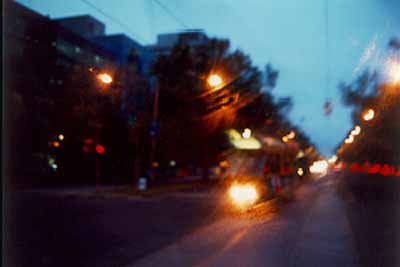
Tejal Shah »
The Tomb of Democracy
Exhibition: 14 Mar – 26 Apr 2003
Sophienstr. 18
10178 Berlin

ALEXANDER OCHS PRIVATE
Schillerstr. 15
10625 Berlin
+49 (0)30-45 086 878
ochs@alexanderochs-private.com
www.alexanderochs-private.com
Wed-Fri 13-18, Sat 11-15

In the center of the presentation is the installation THE TOMB OF DEMOCRACY ... paradise does not exist "Under the Shade of the Sword". Tejal Shah exposes with the genocide on muslims in the Indian region Gujarat and formulates the "Clash between the cultures" and the supression of minorities, always leaded under the plea of different refigiousness as an global problem. In other, earlier works (videos and photoseries) the artist is occupied with ‚inter-states’ and "trans-situations" and their resulting suspenses. Topics are sexuality as well as urban images. Artist statement: "As an artist, as an India artist, as an Indian artist living and practicing in this country, I am compelled not just to hold a mirror to the society but also to myself; for once you've seen certain things, you can't un-see them, and seeing nothing is as political an act as seeing something. Fascism is indeed as much about people as about governments. It begins at home. In drawing rooms. In bedrooms. In beds. If not, then years from now, when the rest of the world has shunned us (as it should), like the ordinary citizens of Germany in the 30's, we too will learn to recognise revulsion in the gaze of our fellow human beings. We too will find ourselves unable to look our own children in the eye, for the shame of what we did and did not do. For the shame of what we allowed to happen. This is me. This is us. In India." (Tejal Shah, March 2003)
Im Zentrum der Präsentation steht die Installation THE TOMB OF DEMOCRACY ... paradise does not exist "Under the Shade of the Sword". Tejal Shah setzt sich in der Arbeit mit dem 2001 geschehenen Genozid an den Muslimen in der indischen Region Gujarat auseinander und formuliert so den 'Clash zwischen den Kulturen' sowie die Unterdrückung von Minderheiten, die immer geführt unter dem Vorwand unterschiedlicher 'Religiosität', ein globales Problem darstellt. In anderen gezeigten, früheren Arbeiten (Videos und Photoserien) beschäftigt sich die Künstlerin mit 'Zwischenzuständen' und den aus 'Übergangssituationen' resultierenden Spannungsfeldern. Themen sind Sexualität ebenso wie Bilder von Städten.